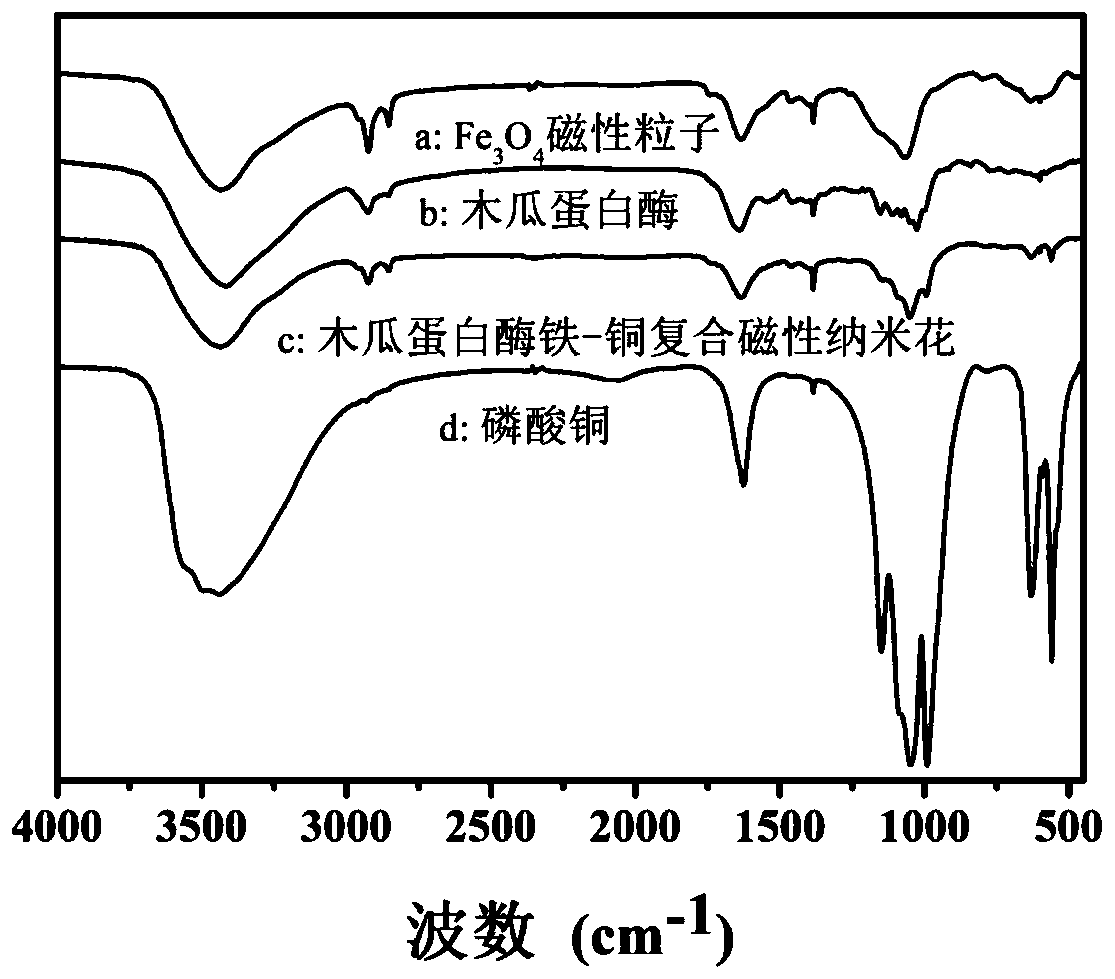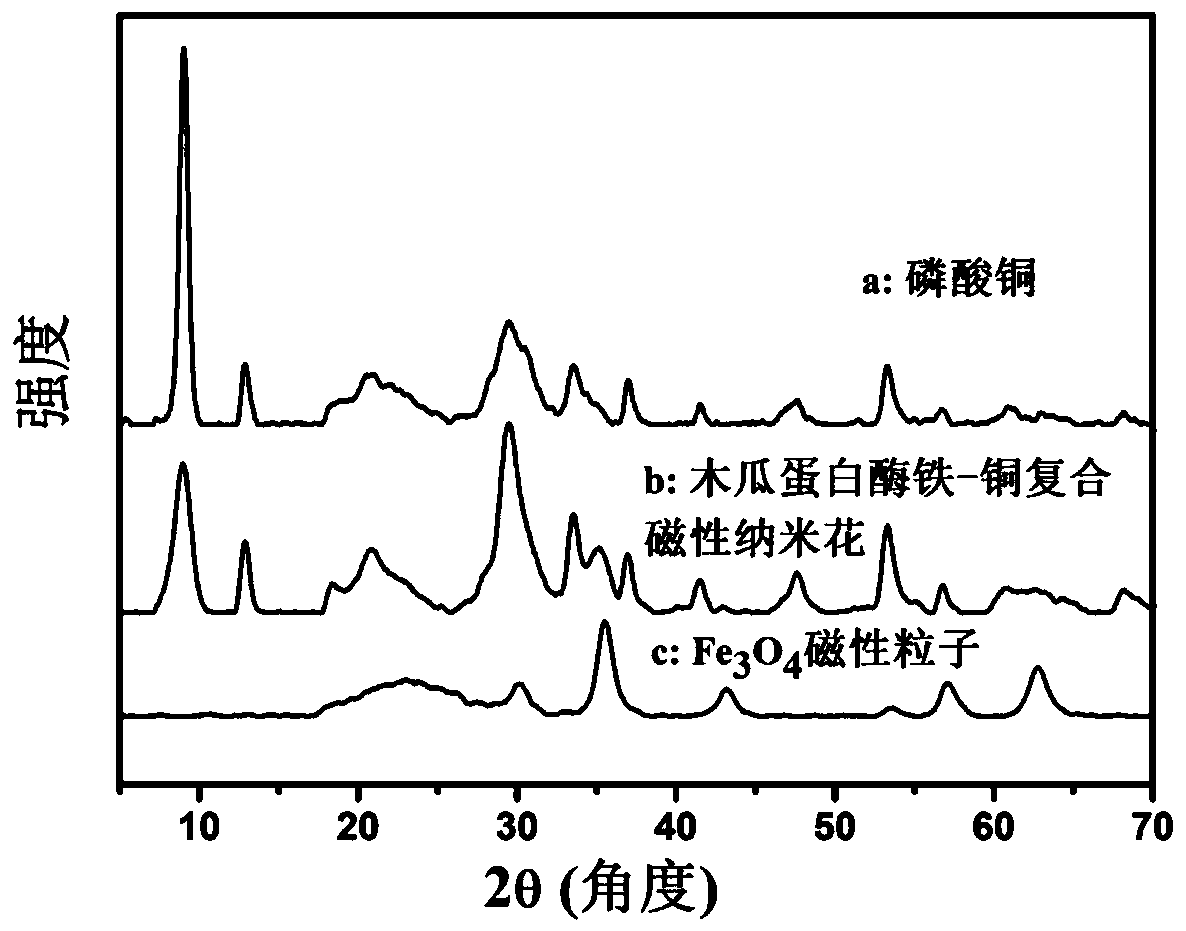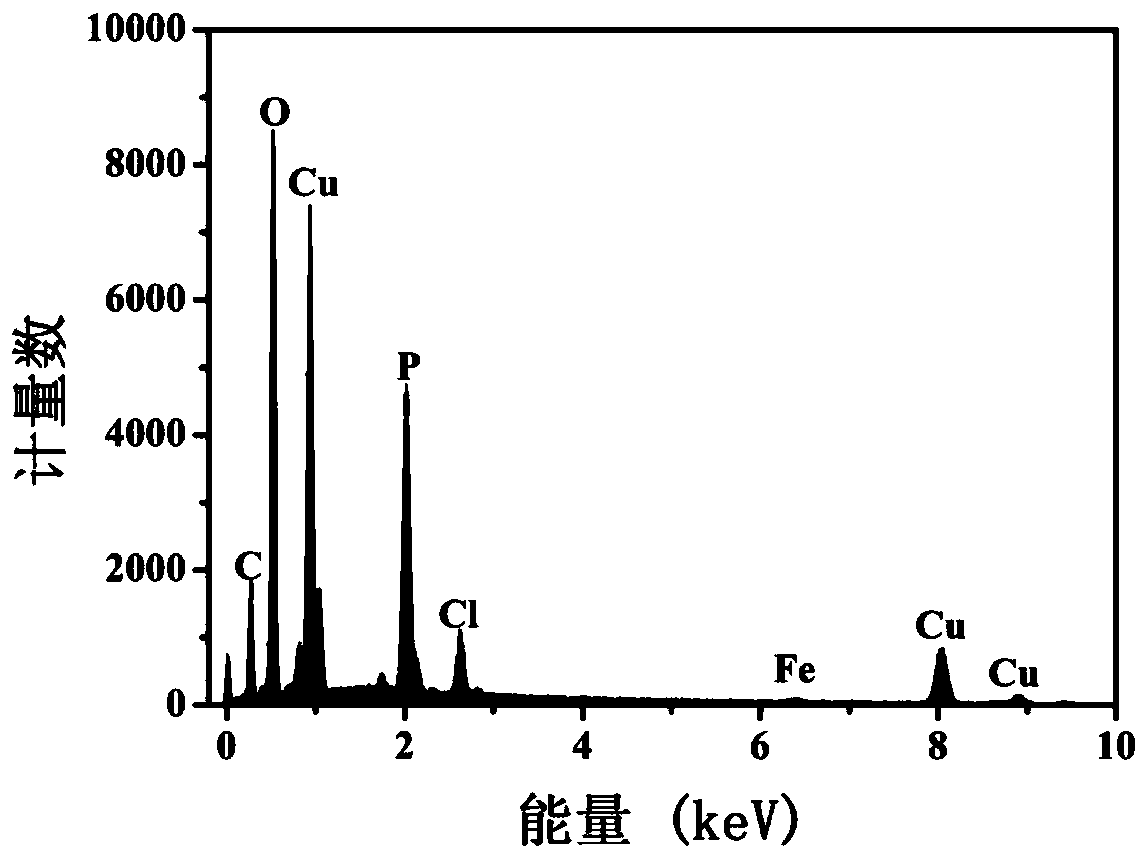Ferrum-copper composite nanoflowers containing papain and preparation method and application of ferrum-copper composite nanoflowers
A papain and composite magnetic technology, applied in applications, magnetic materials, magnetic objects, etc., can solve the problems of not being too severe, the structure of nano-flowers is fragile, etc., to reduce sensitization, improve reuse performance, and quickly separate the reaction solution. Effect
- Summary
- Abstract
- Description
- Claims
- Application Information
AI Technical Summary
Problems solved by technology
Method used
Image
Examples
Embodiment 1
[0055] (1) Dissolve 1.2g of sodium citrate in 80mL of ethylene glycol, add 2.6g of ferric chloride and stir until dissolved, then add 3.2g of sodium acetate and stir for 30 minutes, and keep the above solution at 200°C for 20 hours. After the reaction, wash with water for 3 times and ethanol for 5 times, then dry naturally, and the obtained black powder is ferroferric oxide magnetic particles.
[0056] (2) Take 300 mg of the ferroferric oxide magnetic particle obtained in step (1) and add it to 100 g of 400 mmol / L urea aqueous solution for ultrasonication for 1 hour, then add 1.25 g of cetyltrimethylammonium bromide, 1.25 g of n-butanol and 5 g of Cyclohexane, after stirring evenly, add 0.875g tetraethyl orthosilicate and 0.375g 3-aminopropyltriethoxysilane. The mixture was reacted at 70° C. for 24 hours, and after the reaction was completed, the precipitate was refluxed with acetone at 80° C. for 24 hours. Finally, the precipitate is collected, washed, magnetically separated...
Embodiment 2
[0065] (1) Dissolve 1.2g of sodium citrate in 80mL of ethylene glycol, add 2.6g of ferric chloride and stir until dissolved, then add 3.2g of sodium acetate and stir for 30 minutes, and keep the above solution at 200°C for 20 hours. After the reaction, wash with water for 3 times and ethanol for 5 times, then dry naturally, and the obtained black powder is ferroferric oxide magnetic particles.
[0066] (2) Take 300 mg of the ferroferric oxide magnetic particle obtained in step (1) and add it to 100 g of 400 mmol / L urea aqueous solution for ultrasonication for 1 hour, then add 1.25 g of cetyltrimethylammonium bromide, 1.25 g of n-butanol and 5 g of Cyclohexane, after stirring evenly, add 0.875g tetraethyl orthosilicate and 0.375g 3-aminopropyltriethoxysilane. The mixture was reacted at 70° C. for 24 hours, and after the reaction was completed, the precipitate was refluxed with acetone at 80° C. for 24 hours. Finally, the precipitate is collected, washed, magnetically separated...
Embodiment 3
[0070] (1) Dissolve 1.2g of sodium citrate in 80mL of ethylene glycol, add 2.6g of ferric chloride and stir until dissolved, then add 3.2g of sodium acetate and stir for 30 minutes, and keep the above solution at 200°C for 20 hours. After the reaction, wash with water for 3 times and ethanol for 5 times, then dry naturally, and the obtained black powder is ferroferric oxide magnetic particles.
[0071] (2) Take 300 mg of the ferroferric oxide magnetic particle obtained in step (1) and add it to 100 g of 400 mmol / L urea aqueous solution for ultrasonication for 1 hour, then add 1.25 g of cetyltrimethylammonium bromide, 1.25 g of n-butanol and 5 g of Cyclohexane, after stirring evenly, add 0.875g tetraethyl orthosilicate and 0.375g 3-aminopropyltriethoxysilane. The mixture was reacted at 70° C. for 24 hours, and after the reaction was completed, the precipitate was refluxed with acetone at 80° C. for 24 hours. Finally, the precipitate is collected, washed, magnetically separated...
PUM
| Property | Measurement | Unit |
|---|---|---|
| concentration | aaaaa | aaaaa |
Abstract
Description
Claims
Application Information
 Login to View More
Login to View More - R&D
- Intellectual Property
- Life Sciences
- Materials
- Tech Scout
- Unparalleled Data Quality
- Higher Quality Content
- 60% Fewer Hallucinations
Browse by: Latest US Patents, China's latest patents, Technical Efficacy Thesaurus, Application Domain, Technology Topic, Popular Technical Reports.
© 2025 PatSnap. All rights reserved.Legal|Privacy policy|Modern Slavery Act Transparency Statement|Sitemap|About US| Contact US: help@patsnap.com



